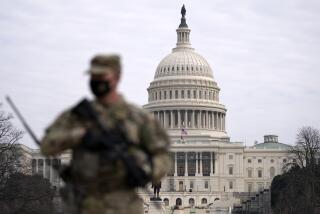House Panel Votes to Kill B-2 Bomber : Defense: Rep. Aspin leads the subcommittee’s attack on the Stealth aircraft. The proposal could conflict with action by a Senate committee.
- Share via
WASHINGTON — A key panel of the House Armed Services Committee on Monday voted to kill further production of the B-2 bomber, dealing the controversial aircraft its first budgetary defeat in a decisive year for the program.
In the first test of his opposition to the Stealth bomber, Rep. Les Aspin (D-Wis.), chairman of the committee, led the panel’s subcommittee on procurement and military nuclear systems in voting to delete $2.75 billion the Pentagon had requested for the production of two aircraft next year. The voice vote came after only scant debate on the proposal.
For Southern California, where as many as 17,000 jobs are expected to be tied to the program at its planned peak of production, the termination of the B-2 program likely would have a major economic impact. For the Northrop Corp., the prime contractor of the beleaguered B-2, the termination of the program could bring serious financial trouble, according to industry and Pentagon analysts.
If adopted by the full committee when it meets today and by the House of Representatives next month, the proposal would put the House at odds with a recommendation of the Senate Armed Services Committee, which voted July 13 to continue full funding of the program. The plan to build 75 of the bombers at a cost of $63 billion has sparked widespread debate in both houses, where many critics have charged that the plane is too costly and does not have a compelling mission in a new age of superpower cooperation.
Monday’s B-2 vote came just a week after Aspin declared that he would oppose further funding for the bomber, which is designed to penetrate Soviet air defenses by eluding radar detection. Congressional sources said that Aspin’s clear opposition will greatly hamper efforts to salvage further production.
Monday’s action came as the House Armed Services Committee worked to draft an overall defense bill that would cut $24 billion in spending authority from the Pentagon’s 1991 funding request of $306.9 billion. The figure is $6 billion more than the Senate Armed Services Committee has proposed cutting.
Aspin recommended that those reductions fall most heavily on the procurement of weapons and equipment and on military manpower.
Last Friday, the House Armed Services subcommittee on military personnel and compensation adopted a recommendation to trim U.S. military rolls by 129,000 servicemen and women in 1991--a cut of 100,000 beyond the manpower figure that the Bush Administration had proposed. Personnel experts at the Pentagon said that such a rapid drawdown of U.S. forces would force massive layoffs and risk serious morale problems among those who remain in military service.
More to Read
Get the L.A. Times Politics newsletter
Deeply reported insights into legislation, politics and policy from Sacramento, Washington and beyond. In your inbox twice per week.
You may occasionally receive promotional content from the Los Angeles Times.











